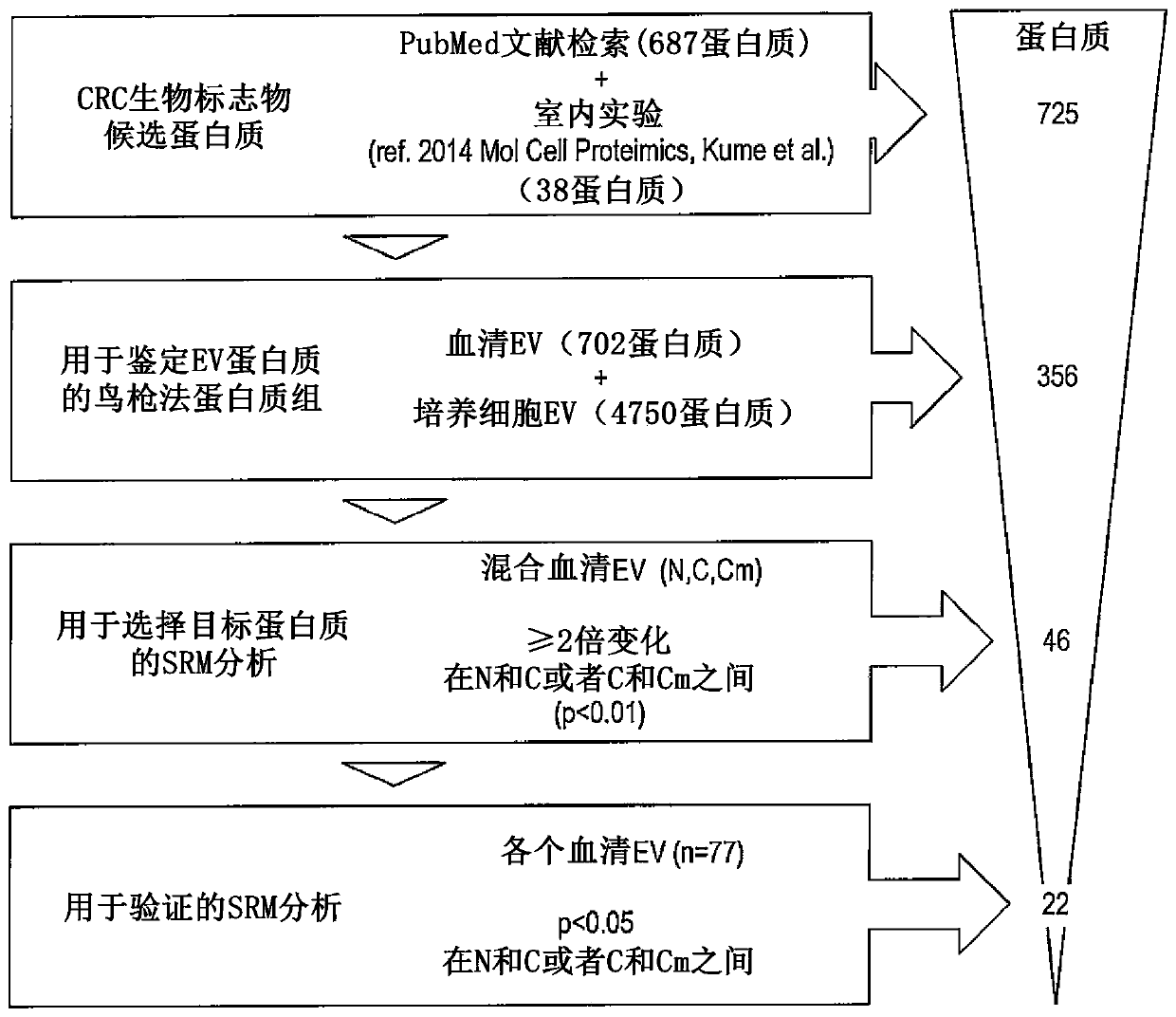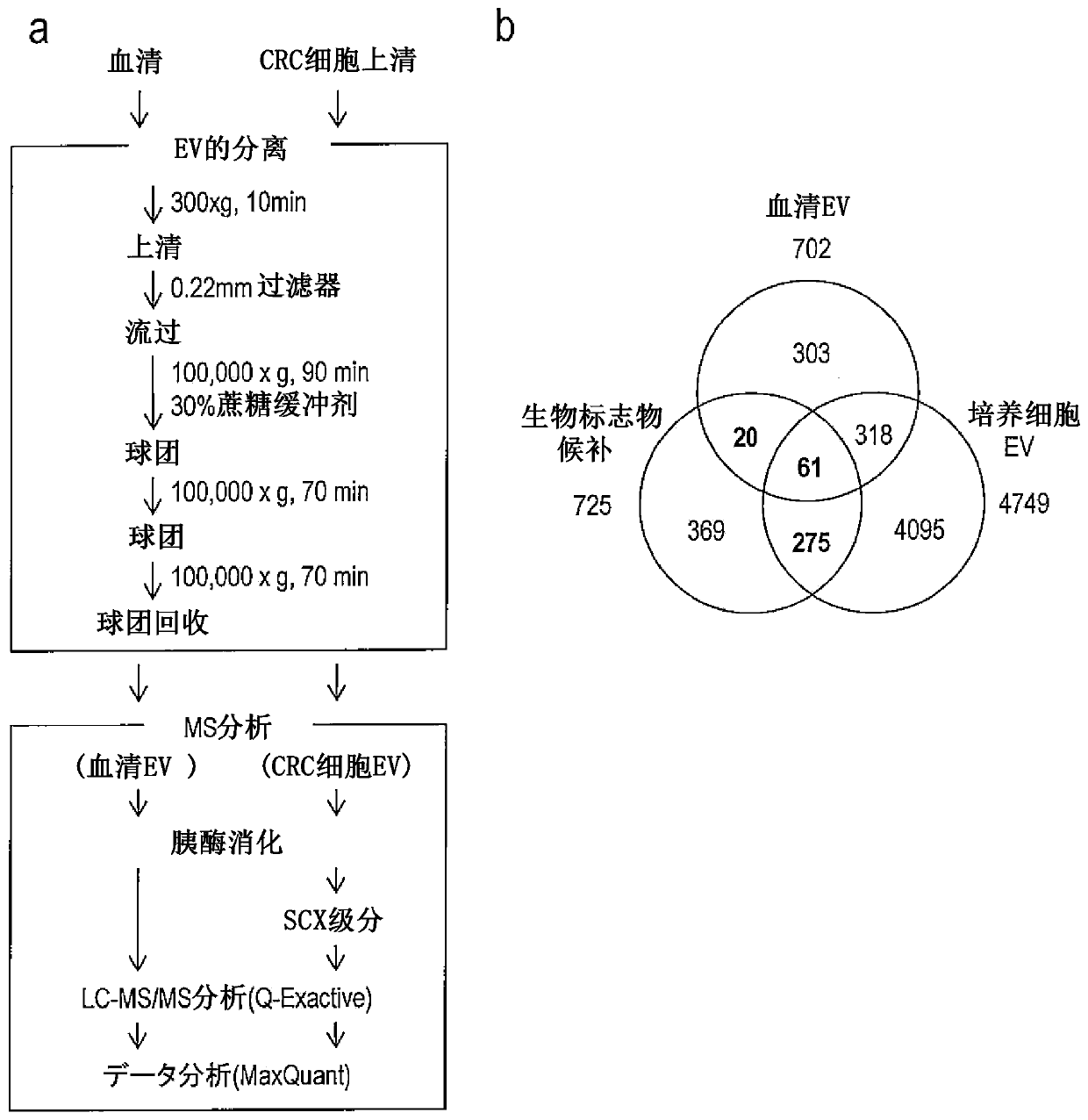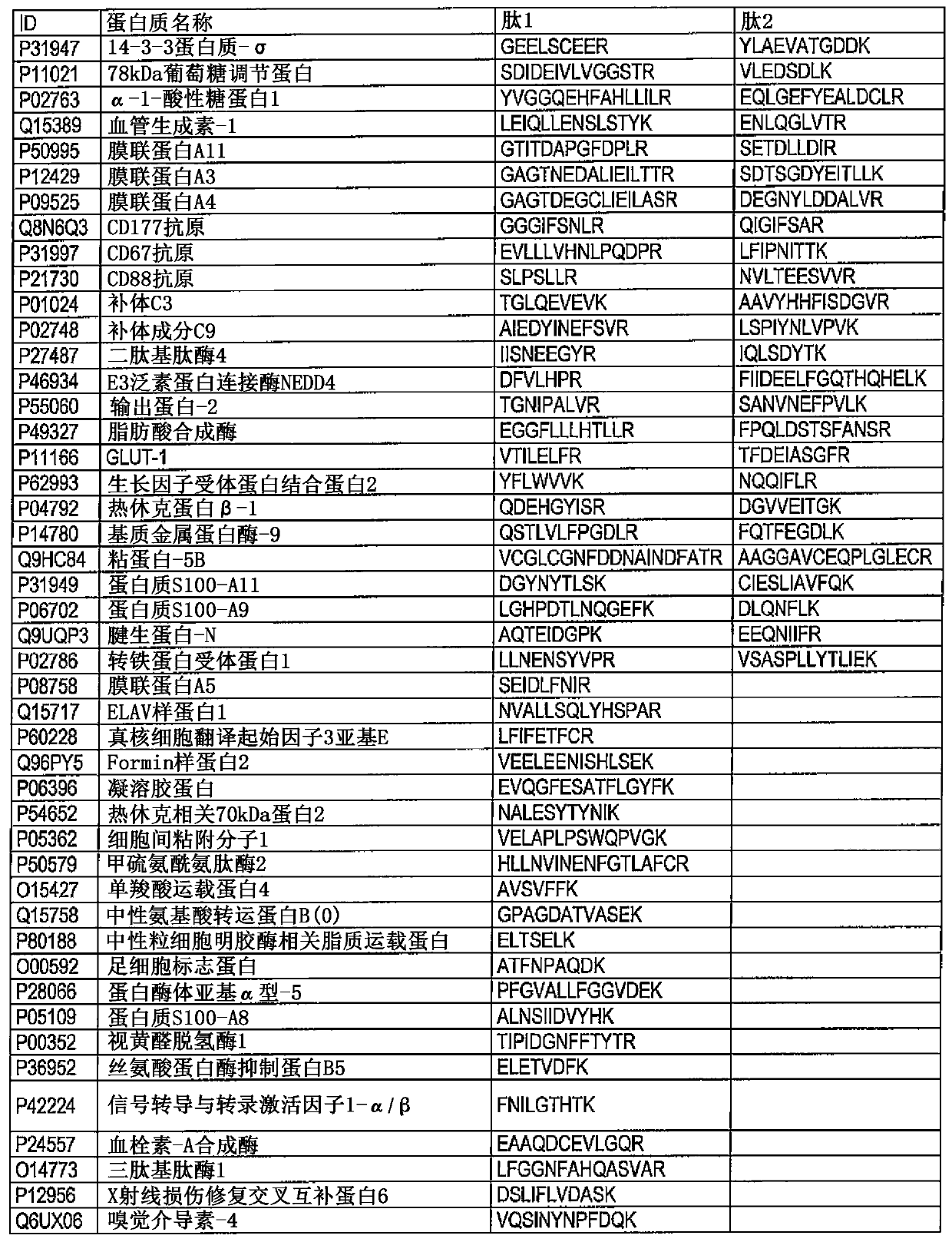Biomarker for detecting colorectal cancer
A biomarker and colorectal cancer technology, applied in the field of protein or peptide biomarkers, can solve the problems of accuracy and specificity, difficulty in simultaneous evaluation, etc., and achieve the effect of high specificity detection and high sensitivity detection
- Summary
- Abstract
- Description
- Claims
- Application Information
AI Technical Summary
Problems solved by technology
Method used
Image
Examples
Embodiment
[0168]The present invention is specifically illustrated by the following examples, but the present invention is not limited by these examples.
[0169] method
[0170] Colorectal cancer patients and healthy normal human serum and colorectal cancer cultured cells
[0171] Serum was collected from 51 patients with colorectal cancer and 26 healthy people (collected at Chiba University Medical Center). Serum samples from each specimen were stored at -80°C until analysis.
[0172] Four colorectal cancer cell lines HCT116 (ATCC; CCL-247), DLD-1 (ATCC; CCL-221), SW480 (ATCC; CCL-228) and SW620 (ATCC; CCL-227) were treated with 10% bovine serum ( FBS) and antibiotic RPMI-1640 medium (Gibco Laboratories).
[0173] Incubate each cell in 5% CO 2 The incubator was maintained at 37°C until the cells proliferated to a sub-confluent state, and each cell proliferated to a sub-confluent state. Then, these cultured cells were washed with FBS-free medium, and fresh FBS-free medium was added...
PUM
| Property | Measurement | Unit |
|---|---|---|
| Sensitivity | aaaaa | aaaaa |
Abstract
Description
Claims
Application Information
 Login to View More
Login to View More - R&D
- Intellectual Property
- Life Sciences
- Materials
- Tech Scout
- Unparalleled Data Quality
- Higher Quality Content
- 60% Fewer Hallucinations
Browse by: Latest US Patents, China's latest patents, Technical Efficacy Thesaurus, Application Domain, Technology Topic, Popular Technical Reports.
© 2025 PatSnap. All rights reserved.Legal|Privacy policy|Modern Slavery Act Transparency Statement|Sitemap|About US| Contact US: help@patsnap.com



